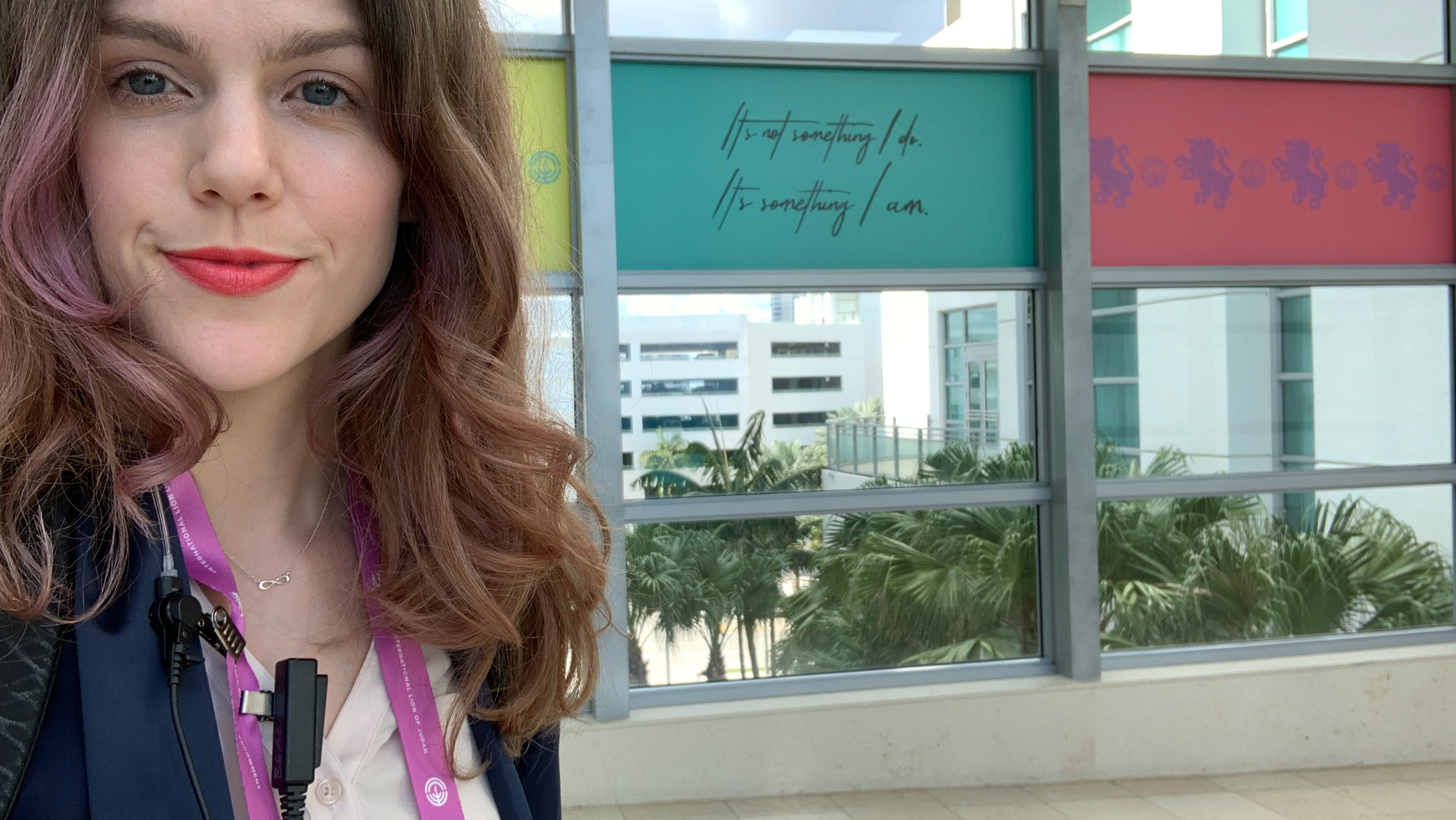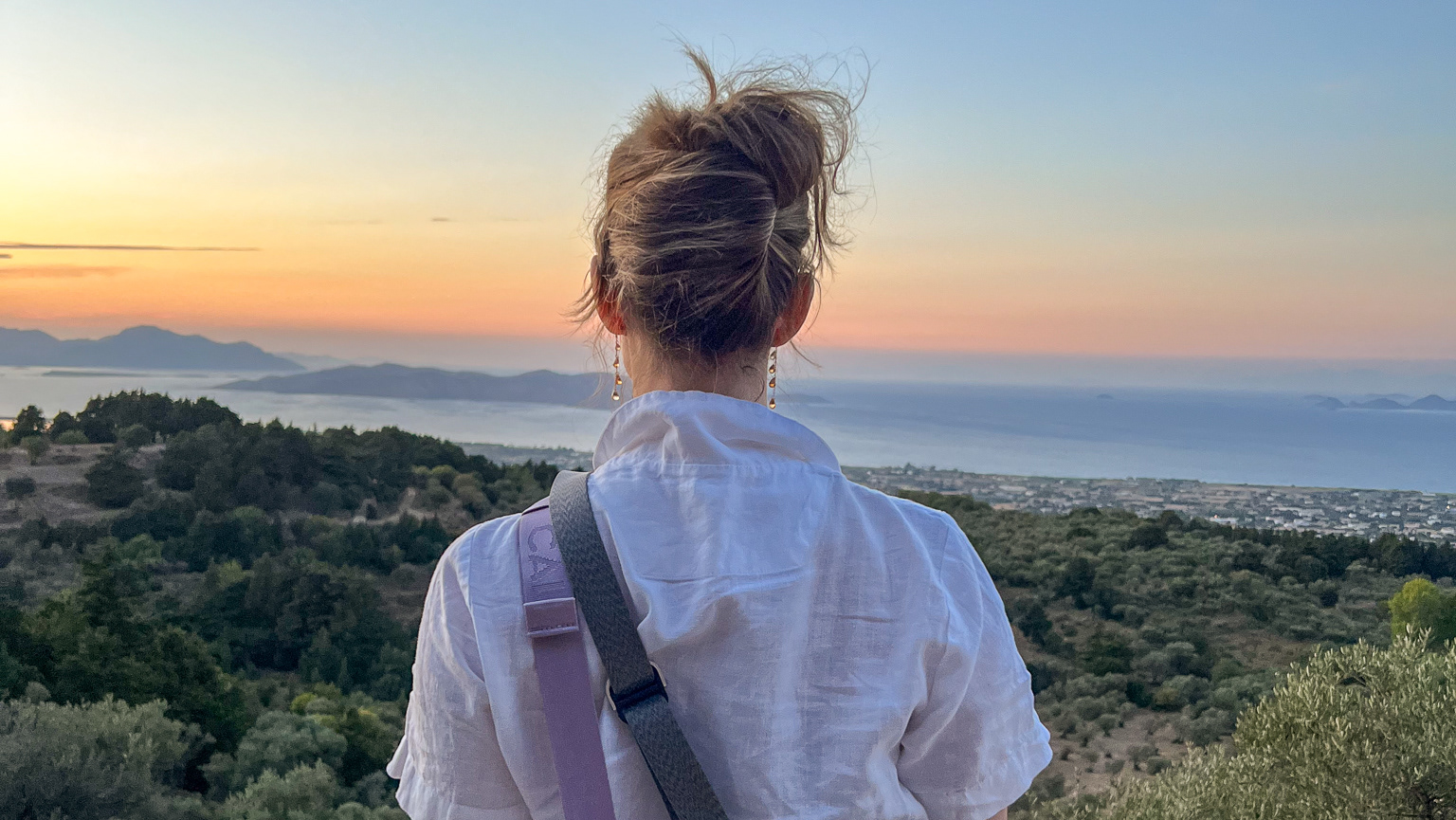Published in Natural Selections on 29 April 2024.
Co-author. Published in PNAS on 13 Oct 2023.
Co-author. Published in Brain Science Advances on 01 Sept 2022.
The Genetics of Circadian Rhythm: an Introduction
The Earth rotates with respect to the Sun once every 24 hours, and life on Earth has evolved to cycle along with the rhythms of light and dark. Circadian rhythm is an approximately 24-hour cycle created by circadian clocks. The clock genes are highly conserved and have been studied in Drosophila, mice, and even plants! Humans have a central clock located in the suprachiasmatic nucleus in the brain that is the master timekeeper of the rhythm. There are also peripheral clocks in cells throughout the body that are synchronized by the central clock. Light is the primary zeitgeber or cue that entrains the clocks, which are controlled by transcriptional and translational feedback loops. Much of human physiology is on the circadian Ferris wheel – including sleep, metabolism, body temperature, the immune system, and even our moods and behaviors.
Jet lag is evidence of an endogenous circadian timer. Our clock is synchronized with the time zone we live in. When we fly across time zones, our body’s clocks are slow to adjust and are still set to the time zone of our departure location when we land. This misalignment with the light-dark cycle of our new environment can cause sleep disturbances, fatigue, malaise, and gastrointestinal issues.
The major players in the human core clock are CLOCK (CLK), BMAL1 (BMAL; also called ARNTL), PERIODs (PER1 and PER2), and the CRYs (CRY1 and CRY2). CLK-BMAL complexes are transcriptional activators of Per and Cry expression. In the cytoplasm, CRY complexes with PER. At high cytoplasmic concentrations, CRY-PER complexes localize to the nucleus. In the nucleus, CRY-PER complexes inhibit CLK-BMAL, effectively repressing transcription of Cry and Per. When PER & CRY concentrations are high, they suppress the expression of their own genes; as the proteins are degraded, concentrations fall and transcription proceeds. This elegant feedback loop creates a cycle of oscillating concentrations like the swings of a pendulum. Post-translational controls such as phosphorylation, glycosylation, and ubiquitination regulate this negative feedback loop. For example, the function, stability, and localization of PER proteins are affected by phosphorylation by casein kinases.
We can imagine how allelic variations in any of the core clock proteins or other proteins and co-factors they interact with may disturb the circadian rhythm of the organism. Several human allelic variants have been associated with sleep disorders. The most common human sleep disorder is Delayed Sleep-Wake Phase Disorder (DSPD), which is a fancy way of calling someone a “night owl.” It’s difficult for people with DSPD to fall asleep until 3:00 a.m. or later. Their circadian period, referred to as the “tau,” may be longer than 24 hours. Many allelic variants of multiple genes have been associated with DSPD. One example is a polymorphism of amino acid 647 of PER3 (Ebisawa et. al., 2001). Advanced Sleep-Wake Phase Disorder (ASPD) is less common than DSPD. People with ASPD wake up 3-4 hours earlier than normal and fall asleep early too. Their clocks may have a shorter tau. One study identified a missense mutation in the casein kinase 1d gene that leads to Familial Advanced Sleep Phase Syndrome (FASPS) (Xu et. al., 2005). Other research has found mutations in PER genes that lead to FASPS (Yamazaki, 2020).
Human CRY1 is a critical clock protein. CRY1 is a flavin-binding protein in the cryptochrome family. Although in plants and Drosophila, cryptochromes are photoreceptors and are involved in the light input pathway for clock entrainment, mammalian CRYs are not photoreceptors. Nor are they photolyases, which act as DNA repair enzymes that repair damage caused by exposure to UV light, despite the fact that mammalian CRYs contain a photolyase homology region. Research has shown that functional CRY1 is required to maintain a cell-autonomous circadian rhythm (Khan et. al., 2012). It is the primary inhibitor of CLK-BMAL and it functions independently of light input. This is in contrast to CRY2, the other human CRY protein, which is not essential to rhythmicity but has an impact on period length. In general, CRY1 lengthens the tau and CRY2 shortens it. Having both functional CRY1 and CRY2 is important for maintaining the ~24-hour tau we all know and love.
CRY1 comprises 12 translated exons and three main regions: a photolyase homology region (PHR), a predicted coiled-coil region (CC), and a C-terminal domain or “tail.” The PHR is the star of the show – this is the part that enables CRY1 to repress CLK-BMAL1. There is a helical domain within the PHR that distinguishes CRY1 from CRY2 in mice (amino acids 313-426). The CC interacts with PER2 (and Fbxl3, which marks CRY1 for degradation). The tail is still a bit of a mystery at this point. Current research seeks to elucidate the details of its structure and function. Experiments have shown that the tail is not critical for maintaining a rhythm, but it does affect period length and amplitude.
New research has demonstrated that the CRY1 tail regulates the association of CRY1 with the CLK-BMAL complex (Parico et. al., 2020). The tail binds to the CRY1 PHR to compete with the PAS-B domain of CLOCK for binding to CRY1. When the tail is bound to the PHR, CRY1 has decreased affinity for CLK-BMAL. Therefore, the tail modulates the ability of CRY1 to repress transcriptional activation by CLK-BMAL. In other words, the tail enables CRY1 to regulate itself. However, PER2 is able to displace the tail from the PHR. This suggests that the autoinhibitory role of the tail most likely happens when CRY1 represses CLK-BMAL independently of PER. Interestingly, Parico et. al. also showed that the CRY2 tail also binds to the CRY2 PHR, indicating that PHR-tail interactions are conserved among mammalian cryptochromes.
A dominant gain-of-function variant of CRY1 that is positively associated with DSPD was recently discovered (Patke et. al., 2017). A missense mutation within the 5’ splice site following exon 11 causes a deletion of 24 residues in the tail region. (The entire exon 11 is skipped.) Compared to wild-type CRY1, CRY1D11 shows increased nuclear localization and increased affinity for CLOCK and BMAL1, making it a better repressor of CLK-BMAL. This leads to increased transcriptional inhibition for genes that CLK-BMAL activates, such as PERs. Ultimately, this gain-of-function variant lengthens the typical tau by ~0.5 hour, which translates to about a 2-2.5 hour delay in sleep onset. However, CRY1D11 still rescues rhythmicity in mice Cry1/Cry2 double knockouts, which implies that exon 11 is not essential for maintaining a rhythm.
Follow your gut.
A lot of people have been saying that to me recently.
It makes me wonder – what does it mean to really trust your gut? And is it always a good idea to follow our gut instincts?
I’m amused by the coincidence that this advice aligns with my intense scientific interest in the gut microbiome. The enteric nervous system that regulates our gut is sometimes referred to as our “second brain.” Our gut microbes weigh approximately the same as the human brain (three pounds) and comprise ten times the number of cells in our bodies and over 100 times as many genes as our genomes. These gut bacteria produce about 95% of the body’s serotonin, the neurotransmitter that affects our mood, sleep, digestion, nausea, wound healing, bone health, blood clotting, and sexual desire. They also produce GABA, a neurotransmitter that controls fear and anxiety. The bidirectional communication between the brain and the gut is implicated in developmental, neurodegenerative, and mood disorders, and – on the flip side – our gastrointestinal health, behaviors, and cognition.
It’s difficult to pinpoint the exact historical moment when “trust your gut” became a widely used term. It's conceivable that the saying alluded to the connection between our gut interoception and our judgments decades before scientists began to elucidate the mechanisms by which gut-brain communication occurs. This is currently an active area of research, both a hot topic and a highly criticized field that presents many questions that remain to be answered.
“Feelings or emotions do not originate in the gut but are generated in the brain, and the term ‘gut feelings’ is a scientifically ill-defined and misleading expression…. There is no scientific evidence based on validated data that ‘gut feelings’ have the power to direct judgements and decisions such that they have primarily a beneficial or happy payoff" (Holzer, 2022).
Science aside, “trust your gut” is obviously a metaphor for following your intuition.
What is intuition? Is it a vestigial byproduct of evolution, a way to protect us from lions and tigers and bears? When you stand in front of a room of people, prepared to speak about a current project, or share a bit of poetry, or execute the dance routine you’ve been practicing for weeks – and your hands tremble, your heat rate increases, and your cheeks flush – is that your intuition telling you to run away and hide? If so, we know that it’s better to stay and do what you got up there to do. To speak, to share, to dance, to love. What if you feel scared on the first day of a new job? Anxious right before walking down the aisle? Nervous before signing a new lease? Should you listen to your “gut” and decide this path is not for you? That your body is signaling that you’re stressed and that whatever choices you made up until the present moment that landed you here, were bad ones? Or do you take a deep breath (or ten), strike a power pose, and silence that little voice in your head that’s saying, “You suck. This sucks. Everything is terrible.”
In those situations, most of us recognize that our anxiety is unfounded, not worthy of changing our whole life’s course, and should be ignored. (For those of you who have zero anxiety – I envy you, and please don’t rub it in.)
So, how do we know when to trust our gut feelings, and when to ignore them?
Whether it’s committing to a romantic relationship, choosing a career, pursuing a degree, moving to a new city, buying a house, having a baby – all our BIG decisions in life come with a large serving of joy, and perhaps also a side of fear. Do we only take the risk and go for it when the joy outweighs the fear? What if you’re just inclined to feel anxious during transitions? How can you predict what will make you happy in the long run? After all, the present “you” doesn’t know or understand the future “you” and apparently, we’re worse than data-based algorithms at predicting the best moves to make (as any chess player will tell you). So, can we even trust ourselves to make our biggest life decisions?
And if we can’t trust ourselves – if we can’t rely on our intuition, our gut feelings – who can we trust?
This clearly turns into an existential crisis pretty quickly. Any good friend, wise or not, will tell you that only YOU can make your life decisions, and that only you know what’s best for you. (To be fair, this strategy for giving advice is stellar, as it relieves the advisor of any responsibility for the outcome of the advice-seeker’s ultimate decision, and therefore prevents future resentment. If your wife ever tells you she doesn’t care what you eat for dinner tonight, and suggests you decide instead – DON’T FALL FOR IT.)
Wouldn’t it be easier if we could just consult a crystal ball? A psychic woman sheltered behind a neon sign of an Upper West Side storefront? Can’t the Tarot cards or my horoscope or my Myers-Briggs result or my therapist tell me what to do?
Why do I have to decide?
Because I’m the one who has to process the break-up, go through the training process for the new job, pay the mortgage, change the diapers. (And eat the sushi when I really wanted pizza.)
What I find curious is that people tell you to follow your gut when you’re doubting a decision. Nobody tells you to follow your gut when you’re certain about something, when you’re determined to get that degree, or start that new business, or text that guy back. After all, once you’ve decided on something for sure, you’re not really turning to others for advice, right?
So maybe what they’re saying is: “It’s okay to do this. It’s okay to let go of the certain path for the unknown. I’ll support you no matter what. All I want is for you to be happy. It’s up to you to define what success means for yourself. I’m not gonna sway you either way – follow your heart.”


